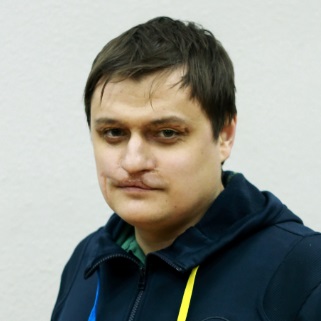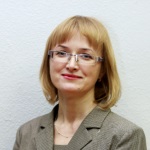
There is a time in the lives of many people whose work is related to GIS, the time of a traditional three-day festivity that is GIS-Forum. This year it was held for the eighth time at the Faculty of Geography of Kharkiv National University on March 14-16.
Each year, this event transforms the participants into a large and friendly family, which accepts new members warmly and hospitable every time. Given the endless winter at the 50th parallel, where the calendar seems to be useless, it takes over the rights and responsibilities of the spring – this time a special warmth and the family atmosphere felt stronger than ever. There were not enough coffee breaks to catch up with all the new-old friends and colleagues of the GIS universe.
In addition to traditional activities, this year there was also a new one which in the future should receive a permanent basis – measures to attract high school pupils from educational institutions of Kharkiv and region, a quest called “The best route”.
Day-by-day review
Day one. Production
The first day is dedicated to production. Traditionally, the most awesome day that attracts the attention of most participants and is accompanied by an exhibition of modern geodetic equipment. More than a third of the submitted reports took place on this particular day. Among the speakers were regular participants, each year showing progress in the work of their organizations, and new ones – which, in turn, demonstrate competitiveness and readiness for fruitful cooperation. Regarding the exhibition, the regular participants called it “grounded”, because this year, unlike the previous ones, there were no UAVs. Geodetic equipment – electronic tachometers and GNSS receivers this year completely seized the hall of the fourth floor of the Karazin University. This is by no means connected with the “departure” of the trend and the importance of the UAVs, and on the contrary, emphasized the importance of geodetic works when performing high-precision surveys by remote methods, to obtain a mapping basis for various industrial, agricultural and social purposes.
Day two. Education
The next day attracted as many interested participants at the first one. The speakers offered preparatory courses on photogrammetric processing of remote sensing data (Kondratenko Tetiana, Drone UA), ways of implementing educational programs in creating digital maps (Kukovskaya Tetyana, HERE Ukraine), the use of Mapbox platforms for various GIS solutions (Golovin Andrew, Mapbox), Viktor Putrenko shared the experience and results of the implementation of international projects at Sikorsky KPI, the main tips for UAV beginners were covered by Arkady Sedov from Dokuchaev University. Also, the topics of this day covered socio-environmental problems of Ukraine: reports on the assessment of the state of peat deposits (Andreyev Sergey, Zhilin Volodymyr, National Aeronautical University named after Zhukovsky), the reports by Vasiliev Anton from REACH Initiative and Sizo Romana from ICRC addressed the problems of the eastern regions of Ukraine on the collision line and showed the importance of using databases and GIS solutions to fully assess the social picture of the areas in question as a whole and provide humanitarian assistance to those who need it.
The big amount of questions showed the importance, curiosity, and relevance of the presentations from the present and the online forum participants, they forced them to deviate from the established agenda for more than an hour.
Day three. Science
The reports presented on the “scientific” day of the GIS-forum had both broad topics and broad geography of the participants. Teachers of universities, scientists of scientific institutions, nature reserves and national parks demonstrated the experience of using GIS and remote sensing in various fields of research – from protected areas to the organization of a municipal economy. Traditionally, most of the reports were presented by Kharkiv researchers, but participants of the GIS-forum had a chance to listen to Mr. Mkrtchan from Lviv, who talked about the analysis of Landsat 8 images in order to determine the factors of the distribution of the temperature field of the underlying surface and Ms Telnova from the Institute of Geography RAS, who talked about the use of ultra-high resolution remote sensing data to assess the dynamics of overgrown reflows. Mr. Gapon from the Taurida University reported on the use of geomatics for the allocation and classification of geosystems and Mr. Gryshchenko from Moscow Lomonosov State University spoke about urban heat islands.
A significant feature of the day of science has become a big number of reports on research materials conducted in the institutions of nature protection. Along with sectional reports, two master classes on geospatial data collection and database creation were held on March 16.
The three days of the GIS-Forum 2018, organized by the Department of Physical Geography and Cartography of the Karazin University, Intetics company, and GeoGuide information resource offered 47 reports (including 10 by students), six workshops, about 200 participants from almost 90 institutions of Ukraine, Russia, Belarus, and Slovakia.
At the end of this overview, here are a few words from our writer Alla Achasova with some sad impressions:
In my distant view (because this year I had to observe the GIS forum remotely in a webinar format, for which special gratitude to the organizers), science and production in the GIS industry are all moving away from each other. There are more and more advanced software products on the market, competition is becoming increasingly rigid, and time for some testing, experimentation and scientific research is decreasing. The clear requirements of commercial companies for GIS employees to be, so to speak, a “universal soldier” – to be able to know everything, to quickly and technically solve any task, turn around the fact that there is no place for science. Very vividly, for example, we see this as an example of commercial proposals in the market for precision farming technologies, which was mentioned, in particular, in the report by Andriy Achasov from Dokuchaev University.
A huge number of similar commercial proposals “for precision farming” in the absence of an adequate scientific and experimental base causes the scientists to get sad and skeptical of agricultural producers. Perhaps this was also the reason for this year’s noticeable decrease, compared with last years, to the attention of the speakers to agrarian subjects. “Modern geodesy” – apparently, such for me was the motto of the GIS-Forum 2018.








